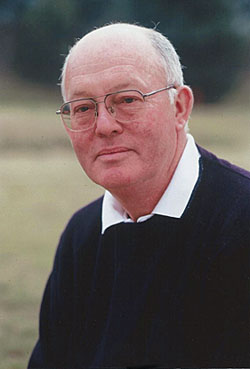

What connections do you see between golf and investing?
For success in both you need a good supply of patience, take the long view and get your fundamentals right.
When did you start playing?
I started to play at the age of about six, which was shortly after my parents moved into a house that was adjacent to the seventh fairway on the Batchwood Hall Public Golf Course in St Albans, England. So you could say I got into golf because the golf course was there! My earliest memories of the game are related to the finding and reselling of lost golf balls, either to passing golfers or to the Pro Shop. That in turn led to getting hold of a golf club and hitting balls around the edges of the course whilst avoiding the course ranger and course staff. From there it was natural progression to playing on the course itself, attending junior coaching organized by the club pro, then to the junior section of the golf club. I caddied for a while and that led to a job in the Pro Shop. I turned pro in October 1966 at the age of 15 with a handicap of six. There’s no way could you do that these days.
How often do you play?
I try to play weekly, mostly at Kau Sai Chau and preferably on the North Course. Walking is a very important part of the game for me, and although I understand the need for golf carts on some golf courses, I believe golf at its most beneficial is a walking game.
What's been your best ever round?
66 – round the Old Course at Fanling in 1980. My playing partner was Dr Robert Fung. I mostly remember holing what seemed like every single putt with a couple of chip-ins.
Do you have a favourite course?
That’s a tough one! I have a strong preference for traditional golf courses, and I enjoy the challenge of playing in the wind and walking. Those are my favourites.
Who would be in your dream fourball?
Joe Hardwick, the former club pro at Fanling – we always enjoy good and close matches; Ben Hogan, just to be able to watch him in action; and Vic Stock, a very good friend and golfer who mentored me in my teens.
How do you maintain focus during a round?
Ah, one of golf’s eternal challenges! Building a game on what we know we can do rather than what we’d like to do is an excellent start. This leads to selecting the most appropriate target and club for the shot at hand. It helps to create a focus of what I know I can do rather than what I think I can do, but my subconscious knows I can’t. When my mind starts drifting, focusing on my breathing quietens things down internally and gets me back to the shot at hand.
How would you describe your overall investment philosophy?
In a word: conservative. As my wife and I have become older we’re most comfortable investing in areas we know. We’ve weathered a couple of highs and lows in the market in the past.
What key lessons have you learned through your personal investing experiences?
Do as much homework as you can, then go with ‘what feels right’. Gut instinct based on good knowledge is not such a bad barometer.
Click here to see the published article.











